Popular categories
Looking for a yarn?

100% Alpaca
from 7.00 BGN /50g
The yarn cost is calculated from the pattern’s smallest size and the yarn’s cheapest product type. Looking for an even better price? You might find it on the DROPS Deals!
Micah
Knitted jumper with cables and raglan in 2 threads DROPS Alpaca for baby and children
Change language:
English (UK/cm), Bulgaria- English (UK/cm), Bulgaria
- Česky - not translated
- Dansk
- Deutsch
- Eesti keel
- English (UK/cm)
- English (US/in)
- Español
- Français
- Íslenska
- Italiano
- Magyar
- Nederlands
- Norsk
- Polski
- Português
- Suomi
- Svenska
- English (UK/cm), Croatia
- English (UK/cm), Greece
- English (UK/cm), Latvia
- English (UK/cm), Lithuania
- English (UK/cm), Romania
- English (UK/cm), Slovenia
- Česky, Slovakia - not translated
Yarn group A
--------------------------------------------------------
JUMPER:
Size: 1/3 - 6/9 - 12/18 months (2 - 3/4) years
Size in cm: 56/62 - 68/74 - 80/86 (92 - 98/104)
Materials: DROPS Alpaca from Garnstudio
Colour no 0100, off white eco
200-200-200 (250-250) g
DROPS CIRCULAR NEEDLE (60 cm) AND DOUBLE POINTED NEEDLES SIZE 4 mm - or size needed to get 19 sts x 25 rows in stocking st with 2 threads = 10 x 10 cm.
DROPS CIRCULAR NEEDLE AND DOUBLE POINTED NEEDLES SIZE 3.5 mm - for edges.
DROPS WOODEN BUTTONS LIGHT, NO 503: 3 pieces
-------------------------------------------------------
Alternative Yarn – See how to change yarns here
Yarn Groups A to F – Use the same pattern and change the yarn here
Yarn usage using an alternative yarn – Use our yarn converter here
-------------------------------------------------------
You might also like...

100% Alpaca
from 7.00 BGN /50g
The yarn cost is calculated from the pattern’s smallest size and the yarn’s cheapest product type. Looking for an even better price? You might find it on the DROPS Deals!
Pattern instructions
* K 3, P 3 *, repeat from *-*.
PATTERN: See diagrams M.1 - diagrams show pattern from RS and are repeated until finished measurements.
DECREASE TIP FOR RAGLAN WITHOUT BUTTON BAND:
K 2 tog. * Work until 3 sts remain before next marker, slip 1 st as if to K, K 1, psso, K 2, K 2 tog *, repeat from *-* at the next 2 markers, work until 4 sts remain on needle, slip 1 st as if to K, K 1, psso, K 2.
DECREASE TIP FOR RAGLAN WITH BUTTON BAND:
DEC AS FOLLOWS FROM RS: Work 4 band sts in garter st, K 2 tog. * Work until 3 sts remain before next marker, slip 1 st as if to K, K 1, psso, K 2, K 2 tog *, repeat from *-* at the next 2 markers, work until 6 sts remain on needle, slip 1 st as if to K, K 1, psso, work 4 band sts in garter st.
DEC AS FOLLOWS FROM WS: Work 4 band sts in garter st, P 2 tog, * Work until 3 sts remain before next marker, P 2 twisted tog (i.e. work in back loop of st instead of front), P 2, P 2 tog *, repeat from *-* at the next 2 markers, work until 6 sts remain on needle, P 2 twisted tog, work 4 band sts in garter st. NOTE: Make sure that the sts lay in the correct direction from RS.
BUTTON HOLES: Cast off for button holes on the raglan band which is on the sleeve part – assess if this is needed in the larger sizes. Dec as follows: K 1, K 2 tog, 1 YO, K 1. Cast off for button holes when band measures:
Size 1/3 months: 2, 5 and 8 cm
Size 6/9 months: 3, 6 and 9 cm
Size 12/18 months: 3, 7 and 10 cm
Size 2 years: 3, 7 and 11 cm
Size 3/4 years: 4, 8 and 12 cm
--------------------------------------------------------
JUMPER:
Worked in the round on circular needle.
BODY:
Cast on 102-114-126 (138-150) sts on circular needle size 3.5 mm with 2 threads Alpaca. Work 1 round in stocking st, then continue with RIB for 3 cm - see explanation above. Switch to circular needle size 4 mm and work 1 round in stocking st. Work next round as follows: 11-14-17 (20-23) sts in stocking st, insert a marker in the first of these sts (= the side), diagram M.1 (= 33 sts), work 11-14-17 (20-23) sts in stocking st, insert a marker in the last of these sts (= the side), work 47-53-59 (65-71) sts in stocking st. Continue to work like this until piece measures 16-17-20 (23-25) cm. Now cast off 5 sts in each side for armholes (= st with marker + 2 sts on each side of this st) = 49-55-61 (67-73) sts on front piece and 43-49-55 (61-67) sts on back piece. Put piece aside and knit the sleeves.
SLEEVE:
Cast on 30-30-36 (36-36) sts on double pointed needles size 3.5 mm with 2 threads Alpaca. Work 1 round in stocking st, continue with rib for 3 cm. Switch to double pointed needles size 4 mm, continue in stocking st. At the same time when piece measures 6 cm, inc 2 sts mid under sleeve, repeat every 3-2-3 (2.5-2.5) cm a total of 4-6-5 (7-9) times = 38-42-46 (50-54) sts. When piece measures 17-19-20 (25-29) cm, cast off 5 sts mid under sleeve = 33-37-41 (45-49) sts. Put piece aside and knit another sleeve.
YOKE:
Slip sleeves on to same circular needle as body where armholes were cast off = 158-178-198 (218-238) sts. Insert a marker in every transition between body and sleeves.
Then continue the piece with or without button holes – see explanation below.
YOKE WITH BUTTONS:
Then the piece is worked back and forth from right "raglan seam" at the front. Cast on 4 extra sts on the front piece part (= button band) = 162-182-202 (222-242) sts.
Read all of the following section before continuing!
Continue in stocking st and with stripes as well as 4 sts in GARTER ST at beg and end of row (for button band).
At the same time dec for raglan – see DECREASE TIP – dec on every other row: 11-11-12 (12-13) times and then on every row: 1-3-4 (6-7) times. NOTE: Also cast off for BUTTON HOLES - see explanation above. At the same time when piece measures 23-25-29 (32-35) cm, slip the middle 13-13-13 (15-15) sts in the front on a stitch holder for neck and work each side separate. Continue to cast off towards the neck on every other row: 2 sts 1 time and 1 st 2-2-2 (3-3) times. After all dec for raglan and cast offs for neck, a total of 45-49-53 (53-57) sts remain on needle.
YOKE WITHOUT BUTTONS:
Then work in the round. Continue in stocking st and with stripes. At the same time dec for raglan – see DECREASE TIP – dec on every other row: 11-11-12 (12-13) times and then on every row: 1-3-4 (6-7) times. At the same time when piece measures 23-25-29 (32-35) cm, slip the middle 13-13-13 (15-15) sts in the front on a stitch holder for neck and continue back and forth on needle. Continue to cast off towards the neck in beg of every row each side: 2 sts 1 time and 1 st 2-2-2 (3-3) times. After all dec for raglan and cast offs for neck, 41-45-49 (49-53) sts remain on needle.
NECK:
Knit up approx. 23 to 27 sts at the front of neck (incl sts on stitch holder) = 68 to 84 sts. Slip all sts on circular needle size 3,5 mm – work 1 round in stocking st while at the same time dec/inc sts evenly to 64-76 sts. Work rib K 2/P 2 for 8 cm, loosely cast off – fold the edge double towards WS and fasten with stitches.
ASSEMBLY:
Sew the openings under the sleeves tog. If button band has been worked: Place button bands on top of each other with the button holes part at the top and fasten in the bottom edge from WS. Sew on buttons.
This pattern has been corrected. Click here to see the correction/s.
Correction: NECK:
Knit up approx. 23 to 27 sts at the front of neck (incl sts on stitch holder) = 68 to 84 sts. Slip all sts on circular needle size 3,5 mm ...
Diagram

|
= K from RS, P from WS |

|
= P from RS, K from WS |

|
= put 2 sts on a cable needle behind work, K2, K2 from cable needle |

|
= put 2 sts on a cable needle in front of work, K2, K2 from cable needle |
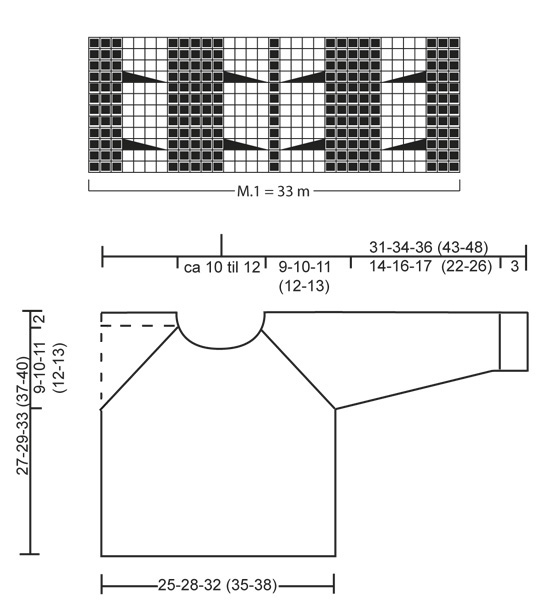
What can you do with our patterns? You can share DROPS patterns online, using the pattern original picture, materials, name and number. But you are NOT ALLOWED to reproduce the complete pattern digitally in any way. Yarn stores are welcome to use the DROPS pattern database to promote the sale of our assortment. You can print out our patterns, make as many copies as you’d like. The only thing we ask is that you don't make any changes / additions to the original printed document. And that the patterns according to the DROPS philosophy are given out to the consumers for free. Editorials that wish to publish our patterns in printed books or magazines can contact us for more information. The sale of garments based on DROPS patterns is permitted as long as they are sold as single items or per order. Further commercial use of the patterns is not permitted. It has to be clearly stated that the garment is made based on a design from DROPS DESIGN. The use of clothing labels of which DROPS DESIGN forms part is conditioned by the inclusion of the following text: “A DROPS DESIGN made by …..”. The use of DROPS photos for marketing purposes/sales is only permitted in connection with the use/sale of DROPS products. The photos may not be cut or edited and the logo should be clearly visible.
We reserve the right to withdraw the permission for use of our patterns at any time, notwithstanding the reason.
Each of our patterns has specific tutorial videos to help you.
These step-by-step tutorials might also help you:
Why is the knitting/crochet tension so important?
Knitting tension is what determines the final measurements of your work, and is usually measured per 10 x 10 cm. It is provided like so: number of stitches in width x number of rows in height - eg: 19 stitches x 26 rows = 10 x 10 cm.
The knitting tension is very individual; some people knit/crochet loosely while others work tightly. You adjust the knitting tension with the needle size, which is why the suggested needle size is only meant as a guide! You need to adjust this (up or down) to ensure that YOUR knitting tension matches the knitting tension provided in the pattern. If you work with a different knitting tension than provided you will have a different yarn consumption, and your work will have different measurements than what the pattern suggests.
The knitting tension also determines which yarns can replace each other. As long as you achieve the same knitting tension you can replace one yarn with another.
See DROPS lesson: How to measure your tension/gauge
See DROPS video: How to make a gauge tension swatch
How do I know how many balls of yarn I need?
The required amount of yarn is provided in grams, eg: 450 g. To calculate how many balls you’ll need you first need to know how many grams are in 1 ball (25g, 50g or 100g). This information is available if you click on the individual yarn quality on our pages. Divide the amount required with the amount of each ball. For example, if each ball is 50g (the most common amount), the calculation will be as follows: 450 / 50 = 9 balls.
Can I use a different yarn than what the pattern suggests?
The important thing when changing from one yarn to another is that the knitting/crochet tension remains the same. This is so that the measurements of the finished piece will be the same as on the sketch provided. It is easier to achieve the same knitting tension using yarns from the same yarn group. It is also possible to work with multiple strands of a thinner yarn to achieve the knitting tension of a thicker one. Please try our yarn converter. We recommend you to always work a test swatch.
Please NOTE: when changing yarn the garment might have a different look and feel to the garment in the photo, due to individual properties and qualities of each yarn.
See DROPS lesson: Can I use a different yarn than the one mentioned in the pattern?
What are the yarn groups?
All our yarns are categorised into yarn groups (from A to F) according to thickness and knitting tension – group A contains the thinnest yarns and group F the thickest. This makes it easier for you to find alternative yarns to our patterns, should you wish to switch yarn. All yarns within the same group have a similar knitting tension and can easily replace each other. However, different yarn qualities have different structures and properties which will give the finished work a unique look and feel.
How do I use the yarn calculator?
At the top of all our patterns you’ll find a link to our yarn calculator, which is a helpful tool should you wish to use a different yarn than suggested. By filling in the yarn quality you wish to replace, the amount (in your size) and number of strands, the calculator will present good alternative yarns with the same knitting tension. Additionally it will tell you how much you’ll require in the new qualities and whether you’ll need to work with multiple strands. Most skeins are 50g (some are 25g or 100g).
If the pattern is worked with multiple colours, every colour will have to be calculated separately. Similarly, if the pattern is worked with several strands of different yarns (for example 1 strand Alpaca and 1 strand Kid-Silk) you will have to find alternatives for each, individually.
Why do you show discontinued yarns in the patterns?
Since different yarns have different qualities and textures we have chosen to keep the original yarn in our patterns. However, you can easily find options among our available qualities by using our yarn calculator, or simply pick a yarn from the same yarn group.
It is possible that some retailers still have discontinued yarns in stock, or that someone has a few skeins at home that they would like to find patterns for.
The yarn calculator will provide both alternative yarn as well as required amount in the new quality.
What size should I knit?
If you think it's hard to decide what size to make, it can be a good idea to measure a garment you own already and like the size of. Then you can pick the size by comparing those measures with the ones available in the pattern's size chart.
You'll find the size chart at the bottom of the pattern.
See DROPS lesson: How to read size chart
Why do I get the wrong knitting tension with the suggested needle size?
The needle size provided in the pattern serves only as a guide, the important thing is to follow the knitting tension. And since knitting tension is very individual, you will have to adjust the needle size to ensure that YOUR tension is the same as in the pattern – maybe you’ll have to adjust 1, or even 2 needle sizes, up or down to achieve the correct tension. For this, we recommend that you work test swatches.
Should you work with a different knitting tension than the one provided, the measurements of the finished garment might deviate from the measurement sketch.
See DROPS lesson: How to measure your tension/gauge
See DROPS video: How to make a tension/gauge swatch
Why is the pattern worked top-down?
Working a garment top-down provides more flexibility and room for personal adjustment. For example it is easier to try the garment on while working, as well as making adjustments to length of yoke and shoulder caps.
The instructions are carefully explaining every step, in the correct order. Diagrams are adjusted to the knitting direction and are worked as usual.
How do I work according to a knitting diagram?
The diagram depicts all rows/rounds, and every stitch seen from the right side. It is read from bottom to top, from right to left. 1 square = 1 stitch.
When working back and forth, every other row is worked from the right side and every other row is worked from the wrong side. When working from the wrong side, the diagram will have to be worked reversed: from left to right, knit stitches are purled, purl stitches are knit etc.
When working in the round every round is worked from the right side and the diagram are worked from right to left on all rounds.
See DROPS lesson: How to read knitting diagrams
How do I work according to a crochet diagram?
The diagram depicts all rows/rounds, and every stitch seen from the right side. It is worked from bottom to top, from right to left.
When working back and forth every other row is worked from the right side: from right to left and every other row is worked from the wrong side: from left to right.
When working in the round, every row in the diagram are worked from the right side, from right to left.
When working a circular diagram you start in the middle and work your way outwards, counter clockwise, row by row.
The rows usually start with a given number of chain stitches (equivalent to the height of the following stitch), this will either be depicted in the diagram or explained in the pattern.
See DROPS lesson: How to read crochet diagrams
How do I work several diagrams simultaneously on the same row/round?
Instructions for working several diagrams after each other on the same row/round, will often be written like so: “work A.1, A.2, A.3 a total of 0-0-2-3-4 times". This means you work A.1 once, then A.2 is worked once, and A.3 is repeated (in width) the number of times provided for your size – in this case like so: S = 0 times, M = 0 times, L=2 times, XL= 3 times and XXL = 4 times.
The diagrams are worked as usual: begin with the first row in A.1, then work the first row in A.2 etc.
See DROPS lesson: How to read knitting diagrams
See DROPS lesson: How to read crochet diagrams
Why are the sleeves shorter in larger sizes?
The total width of the garment (from wrist-to-wrist) will be larger in the larger sizes, despite the actual sleeves being shorter. The larger sizes have longer sleeve caps and wider shoulders, so there will be a good fit in all sizes.
Where on the garment is the length measured?
The measurement sketch/schematic drawing provides information regarding the full length of the garment. If it’s a jumper or a jacket the length is measured from the highest point on the shoulder closest to the neckline, and straight down to the bottom of the garment. It is NOT measured from the tip of shoulder. Similarly, the length of yoke is measured from the highest point on the shoulder and down to where yoke is split into body and sleeves.
On a jacket measures are never taken along bands, unless specifically stated. Always measure inside band stitches when measuring the length.
See DROPS lesson: How to read a schematic drawing
What is a repeat?
Diagrams are often repeated on the round or in height. 1 repeat is the diagram the way it appears in the pattern. If it says to work 5 repeats of A.1 in the round, then you work A.1 a total of 5 times after/next to each other in the round. If it says to work 2 repeats of A.1 vertically/in height you work the entire diagram once, then begin again at the start and work the entire diagram one more time.
Why does the piece start with more chain stitches than it’s worked with?
Chain stitches are slightly narrower than other stitches and to avoid working the cast-on edge too tight, we simply chain more stitches to begin with. The stitch count will be adjusted on the following row to fit the pattern and measurement sketch.
Why increase before the rib edge when the piece is worked top-down?
The rib edge is more elastic and will contract slightly compared to, for example, stocking stitch. By increasing before the rib edge, you avoid a visible difference in width between the rib edge and the rest of the body.
Why increase in the cast-off edge?
It’s very easy to cast off too tightly, and by making yarn overs while casting off (and simultaneously casting these off) you avoid a too tight cast off edge.
See DROPS video: How to bind off with yarn overs (yo)
How do I increase/decrease on every 3rd and 4th row/round alternately?
To achieve an even increase (or decrease) you can increase on, for example: every 3rd and 4th row alternately, like so: work 2 rows and increase on the 3rd row, work 3 rows and increase on the 4th. Repeat this until the increase is complete.
See DROPS lesson: Increase or decrease 1 st on every 3rd and 4th row alternately
How can I work a jacket in the round instead of back and forth?
Should you prefer to work in the round instead of back and forth, you may of course adjust the pattern. You’ll need to add steeks mid-front (usually 5 stitches), and follow the instructions. When you would normally turn and work from the wrong side, simply work across the steek and continue in the round. At the end you’ll cut the piece open, pick up stitches to work bands, and cover the cut edges.
See DROPS video: How to knit steeks and cut open
Can I work a jumper back and forth instead of in the round?
Should you prefer to work back and forth instead of in the round, you may of course adjust the pattern so you work the pieces separately and then assemble them at the end. Divide the stitches for the body in 2, add 1 edge stitch in each side (for sewing) and work the front and back pieces separately.
See DROPS lesson: Can I adapt a pattern for circular needles into straight needles?
Why is the pattern slightly different than what I see in the photo?
Pattern repeats can vary slightly in the different sizes, in order to get the correct proportions. If you’re not working the exact same size as the garment in the photo, yours might deviate slightly. This has been carefully developed and adjusted so that the complete impression of the garment is the same in all sizes.
Make sure to follow instructions and diagrams for your size!
How do I make a women’s size garment into a men’s size one?
If you have found a pattern you like which is available in women’s size it’s not very difficult to convert it to men’s size. The biggest difference will be the length of sleeves and body. Start working on the women size that you think would fit across the chest. The additional length will be worked right before you cast off for the armhole/sleeve cap. If the pattern is worked top-down you can add the length right after the armhole or before the first decrease on sleeve.
Regarding additional yarn amount, this will depend on how much length you add, but it is better with a skein too many than too few.
How do I prevent a hairy garment from shedding?
All yarns will have excess fibres (from production) that might come off as lint or shedding. Brushed yarns (ie hairier yarns) have more of these loose, excess fibres, causing more shedding.
Shedding also depends on what is worn under or over the garment, and whether this pulls at the yarn fibres. It’s therefore not possible to guarantee that there will be no shedding
Below are some tips on how to get the best result when working with hairier yarns:
1. When the garment is finished (before you wash it) shake it vigorously so the looser hairs come off. NOTE: do NOT use a lint roller, brush or any method that pulls at the yarn.
2. Place the garment in a plastic bag and put it in your freezer - the temperature will cause the fibres to become less attached to each other, and excess fibres will come off easier.
3. Leave in the freezer for a few hours before taking it out and shaking it again.
4. Wash the garment according to the instructions on the yarn label.
Why does my garment pill?
Pilling is a natural process that happens to even the most exclusive of fibers. It's a natural sign of wear and tear that is hard to avoid, and that is most visible in high friction areas of your garment like a sweater's arms and cuffs.
You can make your garment look as new by removing the pilling, using a fabric comb or a pill/lint remover.
In the meantime, you can read the questions and answers that others have left to this pattern or join the DROPS Workshop on Facebook to get help from fellow knitters/crocheters!
Micah |
|||||||||||||
 |
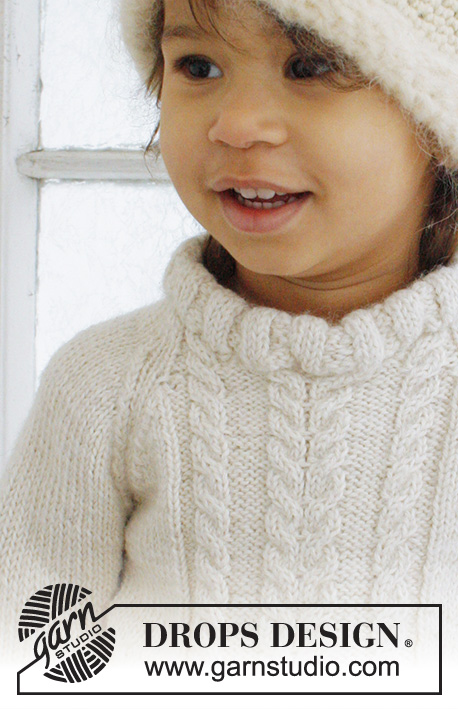 |
||||||||||||
Knitted jumper with cables and raglan in 2 threads DROPS Alpaca for baby and children
DROPS Baby 21-40 |
|||||||||||||
|
RIB: * K 3, P 3 *, repeat from *-*. PATTERN: See diagrams M.1 - diagrams show pattern from RS and are repeated until finished measurements. DECREASE TIP FOR RAGLAN WITHOUT BUTTON BAND: K 2 tog. * Work until 3 sts remain before next marker, slip 1 st as if to K, K 1, psso, K 2, K 2 tog *, repeat from *-* at the next 2 markers, work until 4 sts remain on needle, slip 1 st as if to K, K 1, psso, K 2. DECREASE TIP FOR RAGLAN WITH BUTTON BAND: DEC AS FOLLOWS FROM RS: Work 4 band sts in garter st, K 2 tog. * Work until 3 sts remain before next marker, slip 1 st as if to K, K 1, psso, K 2, K 2 tog *, repeat from *-* at the next 2 markers, work until 6 sts remain on needle, slip 1 st as if to K, K 1, psso, work 4 band sts in garter st. DEC AS FOLLOWS FROM WS: Work 4 band sts in garter st, P 2 tog, * Work until 3 sts remain before next marker, P 2 twisted tog (i.e. work in back loop of st instead of front), P 2, P 2 tog *, repeat from *-* at the next 2 markers, work until 6 sts remain on needle, P 2 twisted tog, work 4 band sts in garter st. NOTE: Make sure that the sts lay in the correct direction from RS. BUTTON HOLES: Cast off for button holes on the raglan band which is on the sleeve part – assess if this is needed in the larger sizes. Dec as follows: K 1, K 2 tog, 1 YO, K 1. Cast off for button holes when band measures: Size 1/3 months: 2, 5 and 8 cm Size 6/9 months: 3, 6 and 9 cm Size 12/18 months: 3, 7 and 10 cm Size 2 years: 3, 7 and 11 cm Size 3/4 years: 4, 8 and 12 cm -------------------------------------------------------- JUMPER: Worked in the round on circular needle. BODY: Cast on 102-114-126 (138-150) sts on circular needle size 3.5 mm with 2 threads Alpaca. Work 1 round in stocking st, then continue with RIB for 3 cm - see explanation above. Switch to circular needle size 4 mm and work 1 round in stocking st. Work next round as follows: 11-14-17 (20-23) sts in stocking st, insert a marker in the first of these sts (= the side), diagram M.1 (= 33 sts), work 11-14-17 (20-23) sts in stocking st, insert a marker in the last of these sts (= the side), work 47-53-59 (65-71) sts in stocking st. Continue to work like this until piece measures 16-17-20 (23-25) cm. Now cast off 5 sts in each side for armholes (= st with marker + 2 sts on each side of this st) = 49-55-61 (67-73) sts on front piece and 43-49-55 (61-67) sts on back piece. Put piece aside and knit the sleeves. SLEEVE: Cast on 30-30-36 (36-36) sts on double pointed needles size 3.5 mm with 2 threads Alpaca. Work 1 round in stocking st, continue with rib for 3 cm. Switch to double pointed needles size 4 mm, continue in stocking st. At the same time when piece measures 6 cm, inc 2 sts mid under sleeve, repeat every 3-2-3 (2.5-2.5) cm a total of 4-6-5 (7-9) times = 38-42-46 (50-54) sts. When piece measures 17-19-20 (25-29) cm, cast off 5 sts mid under sleeve = 33-37-41 (45-49) sts. Put piece aside and knit another sleeve. YOKE: Slip sleeves on to same circular needle as body where armholes were cast off = 158-178-198 (218-238) sts. Insert a marker in every transition between body and sleeves. Then continue the piece with or without button holes – see explanation below. YOKE WITH BUTTONS: Then the piece is worked back and forth from right "raglan seam" at the front. Cast on 4 extra sts on the front piece part (= button band) = 162-182-202 (222-242) sts. Read all of the following section before continuing! Continue in stocking st and with stripes as well as 4 sts in GARTER ST at beg and end of row (for button band). At the same time dec for raglan – see DECREASE TIP – dec on every other row: 11-11-12 (12-13) times and then on every row: 1-3-4 (6-7) times. NOTE: Also cast off for BUTTON HOLES - see explanation above. At the same time when piece measures 23-25-29 (32-35) cm, slip the middle 13-13-13 (15-15) sts in the front on a stitch holder for neck and work each side separate. Continue to cast off towards the neck on every other row: 2 sts 1 time and 1 st 2-2-2 (3-3) times. After all dec for raglan and cast offs for neck, a total of 45-49-53 (53-57) sts remain on needle. YOKE WITHOUT BUTTONS: Then work in the round. Continue in stocking st and with stripes. At the same time dec for raglan – see DECREASE TIP – dec on every other row: 11-11-12 (12-13) times and then on every row: 1-3-4 (6-7) times. At the same time when piece measures 23-25-29 (32-35) cm, slip the middle 13-13-13 (15-15) sts in the front on a stitch holder for neck and continue back and forth on needle. Continue to cast off towards the neck in beg of every row each side: 2 sts 1 time and 1 st 2-2-2 (3-3) times. After all dec for raglan and cast offs for neck, 41-45-49 (49-53) sts remain on needle. NECK: Knit up approx. 23 to 27 sts at the front of neck (incl sts on stitch holder) = 68 to 84 sts. Slip all sts on circular needle size 3,5 mm – work 1 round in stocking st while at the same time dec/inc sts evenly to 64-76 sts. Work rib K 2/P 2 for 8 cm, loosely cast off – fold the edge double towards WS and fasten with stitches. ASSEMBLY: Sew the openings under the sleeves tog. If button band has been worked: Place button bands on top of each other with the button holes part at the top and fasten in the bottom edge from WS. Sew on buttons. |
|||||||||||||
Diagram explanations |
|||||||||||||
|
|||||||||||||

|
|||||||||||||
|
Have you made this or any other of our designs? Tag your pictures in social media with #dropsdesign so we can see them! Do you need help with this pattern?You'll find tutorial videos, a Comments/Questions area and more by visiting the pattern on garnstudio.com. © 1982-2024 DROPS Design A/S. We reserve all rights. This document, including all its sub-sections, has copyrights. Read more about what you can do with our patterns at the bottom of each pattern on our site. |
|||||||||||||
With over 40 years in knitting and crochet design, DROPS Design offers one of the most extensive collections of free patterns on the internet - translated to 17 languages. As of today we count 309 catalogues and 11624 patterns translated into English (UK/cm). 11624
We work hard to bring you the best knitting and crochet have to offer, inspiration and advice as well as great quality yarns at incredible prices! Would you like to use our patterns for other than personal use? You can read what you are allowed to do in the Copyright text at the bottom of all our patterns. Happy crafting!








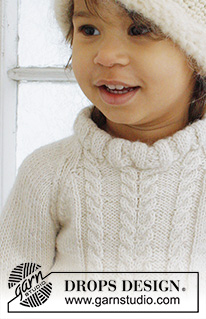

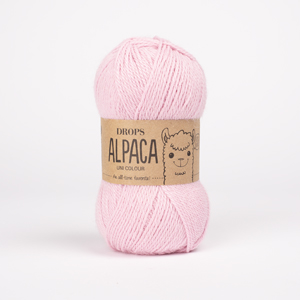



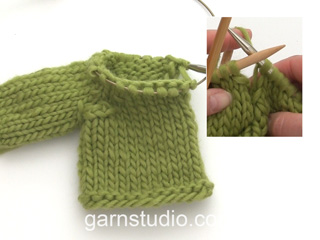
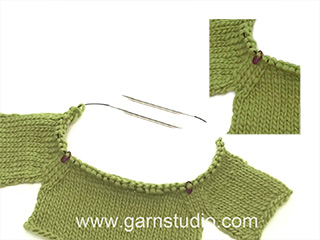
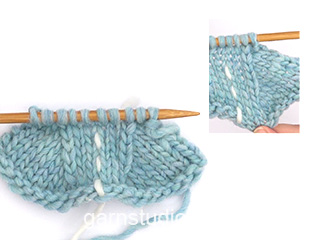

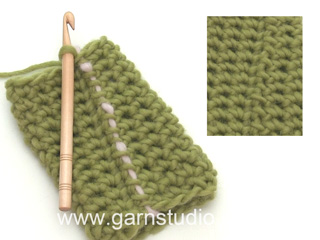

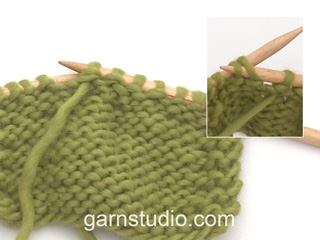


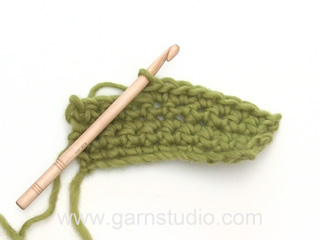

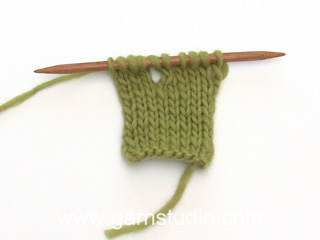
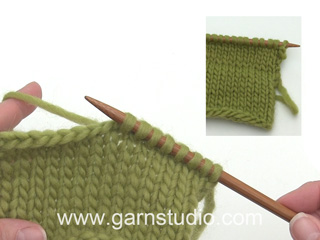

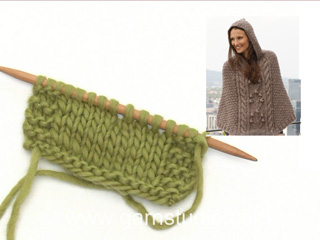
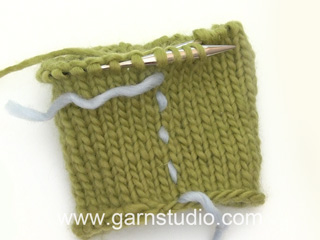
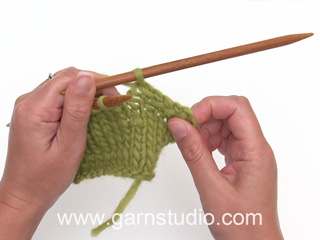
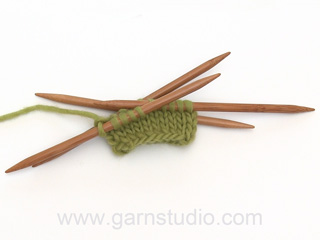
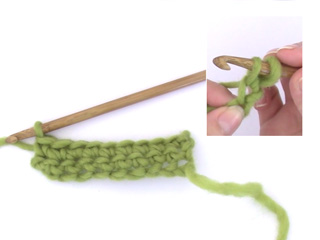
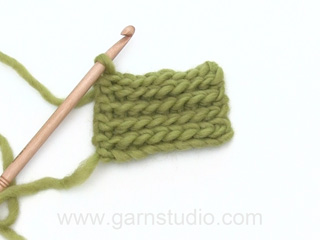

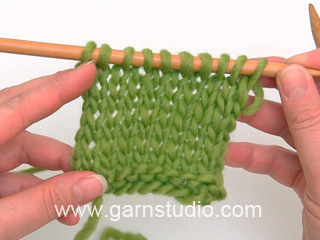




















Comments / Questions (30)
Bonjour, j'ai tricoté le modèle de pull Drops Baby 21-41 pour la taille 3/4 ans. J'aurais voulu le tricoter, maintenant, dans la taille 5/6 ans. Les explications existent-elles ? En vous remerciant Anne Marie Kervarec
17.07.2024 - 15:29DROPS Design answered:
Bonjour Mme Kervarec, ce modèle s'arrête en taille 3/4 ans, mais vous trouverez ici d'autres modèles de pulls en taille 5/6 ans avec torsades (ajoutez/retirez des filtres si besoin). Bon tricot!
02.08.2024 - 14:51Struggling with the section “Yoke Without Buttons”. Making 12-18 months. My piece measures 11 3/8”. I completed the 12 rows of dec, but only 2 of the 4 every row dec I should do. I am knitting in the round. Do I place only FRONT 13 sts on a holder? And if so, would I then need to knit back and forth on remaining sts (sleeve, back and 2nd sleeve)? It sounds like I would bind off (2 sts once + 1 st twice) on each side of these front 13 sts. Correct?
28.04.2024 - 01:47DROPS Design answered:
Dear Marie H, you are right, after you have slipped the 13 sts on a thread for neckline on front piece, you continue back and forth binding off stitches at the beg of each row on each side for neck. and at the same time, continue decreasing for raglan as before. Happy knitting!
29.04.2024 - 10:19Je fait la grandeur 12/18 je suis rendu au 2 rang et a la fin sa ne marche pas
10.04.2024 - 20:52DROPS Design answered:
Bonjour Mme Audet, pouvez-vous nous en dire plus? Qu'est-ce qui ne marche pas à la fin? En 12/18 mois, vous avez 126 mailles que vous tricotez ainsi: 17 m jersey, les 33 m du diagramme M.1, 17 m jersey, et 59 m jersey soit: 17+33+17+59=126 mailles. Bon tricot!
11.04.2024 - 07:13Buonasera. Modello Micah. Devo fare il raglan ma non capisco come. Per prima cosa, da dove si parte? E poi, la diminuzione 2 insieme è sul davanti del lavoro o dopo il segnapunti sulle maglie della spalla? Mi potreste aiutare per favore? Grazie Sara
06.01.2024 - 16:25DROPS Design answered:
Buonasera Sara, il raglan si lavora sullo sprone seguendo le indicazioni riportate all'inizio delle spiegazioni, nei paragrafi dedicati al raglan. Buon lavoro!
09.01.2024 - 20:14Kan ikke få masketallet til at passe, hverken med rib kanten, eller mønstret?
25.12.2023 - 15:59Het minderen voor de raglan begint met: 2 steken samen. Zijn dit 1 steek voorpand en 1 steek mouw? dan komt de raglan bovenop de mouw. Waar begin je met de raglan instructie 2 steken samen, daarna krijg je de *tot* instructies. Er staat herhaal het bij de volgende markeerders. Is dat voor of na de markeerders of over de markeerders heen?
10.12.2023 - 20:43DROPS Design answered:
Nee de minderingen voor de raglan zitten naast de raglanlijnen welke uit 2 steken recht bestaan. Je breit tot er 3 steken over zijn voor de volgende markeerdraad, dan minder je en brei je 2 recht en dan minder je weer. Tussen die 2 steken recht zit de markeerdraad.
17.12.2023 - 17:53Minderen in het midden van de mouw doe je toch niet als je geen rondbreinaald gebruikt? De mindering of meerdering zit dan boven op de kop van de mouw. ( dit is dan niet onder de mouw) Dit geeft toch een gat bij het aan elkaar breien.
22.11.2023 - 08:06DROPS Design answered:
Dag Trijs,
Het werk wordt volgens patroon in de rondte gebreid, maar als je de mouwen op rechte naalden breit, dan doe je het minderen inderdaad aan elke kant van de naald.
25.11.2023 - 09:23Bij het breien van de mouw staat er : meerderen bij een hoogte van 6 cm 2 st. midden onder de mouw. Hoe moet ik dit lezen: 1 steek aan het begin van de naald, 1 steek aan het einde van de naald? Ook 5 steken afkanten midden onder de mouw, waar doe ik dat dan?
21.11.2023 - 20:59DROPS Design answered:
Dag Trijs,
Je kunt het meerderen onder de mouw aan beide kanten van het midden doen. Als je een markeerdraad plaatst tussen de steken om het midden aan te geven, dan kun je 1 steek ervoor en 1 steek erna meerderen. De 5 steken afkanten doe je ook midden onder de mouw. Het zit dan natuurlijk niet precies midden onder de mouw omdat je een oneven aantal steken afkant, maar dat is niet zo erg.
21.11.2023 - 22:39Should the neck be knitted on a 3.5mm circular needle? The pattern says to slip the stitches onto 4mm needle, but they’re already on that! Thanks.
28.12.2022 - 15:20DROPS Design answered:
Dear Jane, you need to work the neck with the 4 mm needles but you can pick up the stitches with either the 3.5 or the 4mm needles. That's why we indicate that you slip the stitches onto 4mm needles, because we are going to use those to work. If you picked up stitches with the 4mm needles, ignore this and continue working as explained. Happy knitting!
07.01.2023 - 19:15Il y a une erreur sur le placement du premier marqueur. S’il est fait tel qu’indiqué dans le patron, la diminution pour l’emmanchure se retrouve à être fait dans le motif avant.
07.12.2022 - 14:34DROPS Design answered:
Bonjour Catherine, on place le 1er marqueur dans la 1ère des 11-14-17 (20-23) m jersey et dans la dernière des 11-14-17 (20-23) m jersey après M.1, autrement dit, lorsque vous rabattrez les mailles des emmanchures vous rabattrez la maille avec le marqueur + 2 mailles avant + 2 mailles après. Vous ne rabattez pas les mailles des torsades, juste les mailles jersey. Bon tricot!
07.12.2022 - 16:42